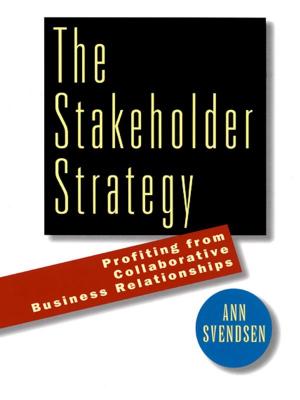Engaging Emergence
Turning Upheaval into Opportunity
Business & Finance, Human Resources & Personnel Management, Organizational Behavior| Author: | Peggy Holman | ISBN: | 9781605096056 |
| Publisher: | Berrett-Koehler Publishers | Publication: | September 13, 2010 |
| Imprint: | Berrett-Koehler Publishers | Language: | English |
| Author: | Peggy Holman |
| ISBN: | 9781605096056 |
| Publisher: | Berrett-Koehler Publishers |
| Publication: | September 13, 2010 |
| Imprint: | Berrett-Koehler Publishers |
| Language: | English |
Shows how to spot the emergence of a new level of order from the seemingly chaotic change that characterizes modern times Offers practices and principles that will help you align yourself and your organization with the new order Features real-world examples of individuals and organizations that have successfully navigated disruptive change 2011 Nautilus Gold Medal in the category of Conscious Business/Leadership Change is everywhere these days, so much so that it can seem like barely-controlled chaos. As a result, increasing numbers of leaders, managers, workers and change agents feel overwhelmed. Some see too many choices, while others see no choices at all. But sometimes within this seeming chaos are the seeds of a higher order. Science calls the process of a new system arising from the ashes of the old emergence. Understanding the phenomenon of emergence can help leaders to gracefully and successfully cope with change and emerge stronger and more purposeful. In this profound and insightful book, Peggy Holman offers new ways to think about the potential upheaval contains as a source of emergent change and shows how to engage it productively. This is is an art more than a science, so Holman offers practices that tell you not precisely what to do but rather how to approach disruptive situations–what to notice, what to explore, what to try, what mindset will leave you most open to identifying the new paradigm as it emerges. She grounds these practices in five overarching principles that apply the scientific understanding of emergence in the natural world to social and organizational change processes. Real-world stories of collapse and renewal serve to illustrate these principles and practices in action. And Holman outlines three questions to help you work compassionately, creatively and wisely with the entire arc of the change process, from coherence to disruption to renewal. This work can be difficult—the end is rarely in sight and the outcome is often uncertain. But it can also be tremendously exciting. Our survival in an increasingly unpredictable world is at stake, and working consciously with emergence is a promising pathway to doing something about it.
Shows how to spot the emergence of a new level of order from the seemingly chaotic change that characterizes modern times Offers practices and principles that will help you align yourself and your organization with the new order Features real-world examples of individuals and organizations that have successfully navigated disruptive change 2011 Nautilus Gold Medal in the category of Conscious Business/Leadership Change is everywhere these days, so much so that it can seem like barely-controlled chaos. As a result, increasing numbers of leaders, managers, workers and change agents feel overwhelmed. Some see too many choices, while others see no choices at all. But sometimes within this seeming chaos are the seeds of a higher order. Science calls the process of a new system arising from the ashes of the old emergence. Understanding the phenomenon of emergence can help leaders to gracefully and successfully cope with change and emerge stronger and more purposeful. In this profound and insightful book, Peggy Holman offers new ways to think about the potential upheaval contains as a source of emergent change and shows how to engage it productively. This is is an art more than a science, so Holman offers practices that tell you not precisely what to do but rather how to approach disruptive situations–what to notice, what to explore, what to try, what mindset will leave you most open to identifying the new paradigm as it emerges. She grounds these practices in five overarching principles that apply the scientific understanding of emergence in the natural world to social and organizational change processes. Real-world stories of collapse and renewal serve to illustrate these principles and practices in action. And Holman outlines three questions to help you work compassionately, creatively and wisely with the entire arc of the change process, from coherence to disruption to renewal. This work can be difficult—the end is rarely in sight and the outcome is often uncertain. But it can also be tremendously exciting. Our survival in an increasingly unpredictable world is at stake, and working consciously with emergence is a promising pathway to doing something about it.















